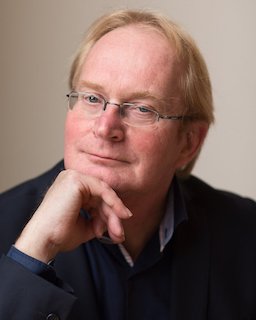The Senseo Patent Story: When Filing a Patent Can Backfire
How even big players like Philips and Douwe Egberts learned the hard way that not every patent is worth pursuing

The Patent Battle Behind the Senseo: A Lesson Brewed in Friesland
A few weeks ago, we were on a weekend getaway in Friesland, a quiet northern region of the Netherlands. Over breakfast in a cozy Douwe Egberts café in Leeuwarden (see the image at the top of this page) we were reminded of just how deeply rooted Dutch innovation can be. Douwe Egberts (DE), founded in 1753 in the Frisian town (or rather village) of Joure, is one of the country's most iconic coffee brands. And in that same café, with the smell of fresh coffee in the air, I couldn't help but think of one of DE's most ambitious innovations: the Senseo coffee system, developed together with another Dutch giant: Philips.
The Senseo Story
Launched in 2001, Senseo revolutionized home coffee making in Europe. Instead of traditional filter coffee or full espresso machines, users could now brew a single cup in seconds, using convenient, pre-packed coffee pads. It was a sleek, affordable, and consumer-friendly alternative (hmmmm, I won't mention the taste of the coffee from those early machines....), and a great example of a strategy where large corporations team up to scale a new technology into a dominant market solution.
Philips and DE: A Dutch Innovation Duo
Philips brought its technical expertise and appliance design; DE brought the brand, the beans, and the consumer base. Together, they captured the European market, especially in the Netherlands, Belgium, Germany, and France. But success invites competition, and soon other manufacturers began producing similar pads for use in Senseo machines.
The Patent Trouble
Sara Lee, then owner of Douwe Egberts, filed a European patent to protect the Senseo coffee pads (patent number EP0904717B1). The idea was simple: if others couldn't legally make compatible pads, DE could preserve its market advantage. But that strategy backfired. In 2006, the European Patent Office revoked the patent, declaring it lacked novelty and inventiveness. Coffee pads, the court found, already existed—and the specific form used by Senseo wasn't different enough to qualify as a true invention.
A Teachable Moment
This case is often cited as a cautionary tale in IP strategy. Even major companies can make patent decisions that don't hold up in court. In hindsight, Philips and DE might have been better off focusing on branding and market positioning than trying to patent something not truly patentable.
Want to understand why that patent didn't stick? A patent all comes down to three key requirements:
- Novelty (is it new?)
- Inventive Step (is it non-obvious?)
- Industrial Applicability (can it be used in industry?)
We explain these principles in detail on our How to Get a Patent page—along with advice on when NOT to patent something, which is just as important.
Conclusion
Sitting in that DE café in Friesland, sipping coffee where it all began, I was reminded that innovation is rarely just about invention. It's about timing, strategy—and sometimes knowing when to let go of the idea of a patent. Senseo succeeded anyway, but the legal lessons it brewed are still worth learning.
Update: Douwe Egberts in American Hands (August 2025)
Recently, a major shift took place in the international coffee market: American beverage giant Keurig Dr Pepper has acquired JDE Peet's, the parent company of well-known brands such as L'Or, but also of the abovementioned Douwe Egberts and Senseo. The deal, valued at €15.7 billion, makes Keurig Dr Pepper one of the largest coffee players worldwide.
It is interesting to note that Douwe Egberts and Senseo have long been at the center of innovation and intellectual property debates — including the failed attempt to patent the DE coffee pads. That episode showed that even global companies can struggle to secure patent protection, and must sometimes rely instead on branding and market strength.
With this acquisition, the iconic Dutch coffee brand now continues its journey under American ownership, in a market where demand for coffee keeps rising globally. Whether the new structure will influence consumer prices or product development remains to be seen.
